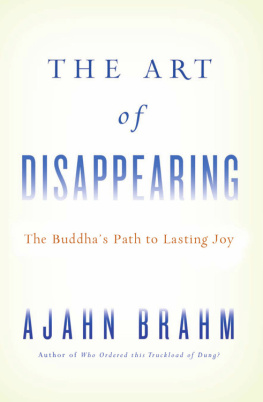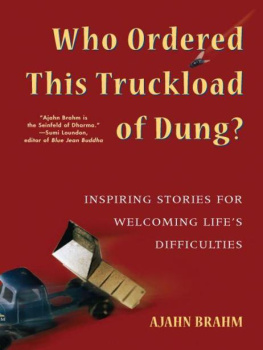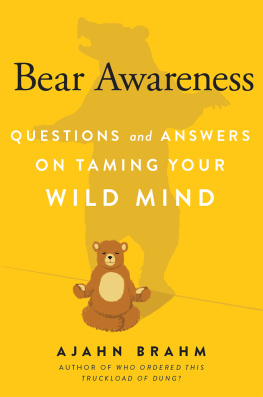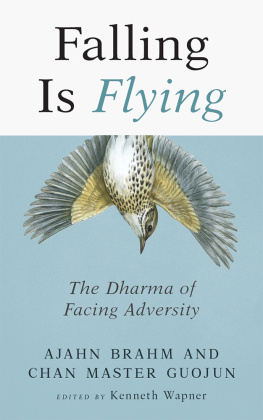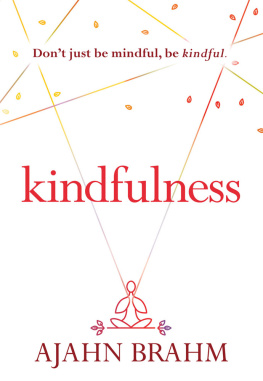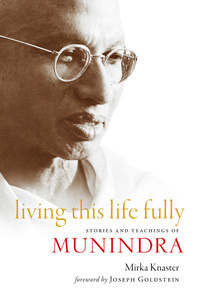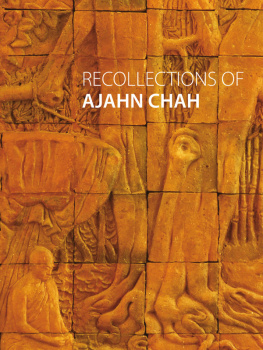






The Art of Disappearing mech_Layout 1 8/23/11 12:18 PM Page 1
We all want life to go smoothly
AJAHN
but things rarely go as expected.
BRAHM
Whether mere bumps in the road or genuine crises, we live in a world of unwanted events that no willpower can prevent. In The Art of Disappearing Ajahn Brahm helps us learn to abandon the headwind of false expectations and follow instead the Buddhas path of understanding. Releasing TH
our attachment to past and future, to self and other, we can directly experience the natural state of serenity underlying all our thoughts and discover the bliss of the present moment. In that space, we learn what it E
is to disappear. Ajahn Brahm, an unparalleled guide to the bliss of meditation, makes the journey as fun as it is rewarding.
ART
With his characteristic simplicity, clarity, and humor, Ajahn Brahm offers a prescription for treating dissatisfaction. His instructions on meditation of
practice are clear enough for new practitioners while at the same time offering profound insights for those with years of experience. These talks teach us the art of disappearing into stillness, which gives rise to D
contentment within life as it is at this very moment. What a gift! I
The Buddhas Path to Lasting Joy
SAPPE
T O N I B E R N H A R D, AU T H O R O F H OW T O B E S I C K
A J A H N B R A H M was born in London in 1951 and earned a ARI
degree in theoretical physics from Cambridge University. He became a monk in 1974 in the jungles of Thailand under the N
highly esteemed Buddhist master Ajahn Chah. Brahm is today a G
revered spiritual guide and abbot of one of the largest monasteries in the southern hemisphere, regularly attracting thousands to his inventive and insightful talks. He is also the author of Who Ordered this Truckload of Dung? and Mindfulness, Bliss, and Beyond.
B U D D H I S M
Wisdom Publications Boston
ISBN: 978-0-86171-668-5 us$15.95
A u t h o r o f W h o O r d e r e d t h i s Tr u c k l o a d o f D u n g ?
wisdompubs.org
Produced with Environmental Mindfulness
Wisdom
Praise for Who Ordered this Truckload of Dung?
One of the Best Spiritual Books of 2005. Entertaining and spiritually edifying. Brimming with humor, humanity, and good will. Spiritualityand Health
More than statistics and theories, we really trust anecdotes and narra-tives. Our brains and beings are wired to learn deeply and easily via stories, and this splendid collection of 108 Buddhist-based tales proves the point. Brahm weaves a rich tapestry of understanding using short threads of stories only a couple of pages long. Publishers Weekly
A book destined to become dog-eared and cherished and read aloud to friends and family. It will fall apart from your attention, I promise you! Its crammed with pithy, modern Buddhist Tales of Happiness, which cleverly relate the wisdom of Buddhas teachings in a poignant, funny, and profound way. Mandala Magazine
Praise for Mindfulness, Bliss, and Beyond
Mindfulness, Bliss, and Beyond demonstrates that Ajahn Brahm is that rare meditator who has actually hadand can describethe profound meditation experiences outlined in the early Buddhist teachings. The good humor is still present, but this outing is more serious, taking us sys-tematically through the classic stages of meditation training from the most mundane (meditation for happiness) to the most exalted (meditation for enlightenment). Along the way, he gives a thorough description of the jhana states, a place that many Western Buddhist teachers have feared to tread. Ajahn Brahm then brings the whole thing back to the kitchen-sink level with some practical suggestions for everyday life.
Shambhala Sun
Buddhist writers are not often lighthearted or zesty, but the British-born Ajahn Brahm is a delightful exception Meditation is difficult to teach on the page, but Brahm projects both energetic conviction and calm equanimity. The promise of bliss he describes in this excellent manual is elusive but remains a compelling goal. Publishers Weekly
Riveting, rollicking, and uncompromisingly real.Glenn Wallis, trans-lator of The Dhammapada: Verses on the Way
!
T H E A R T
of
D I S A P P E A R I N G
The Buddhas Path to Lasting Joy
Ajahn Brahm
Wisdom Publications Boston


Wisdom Publications, Inc.
199 Elm Street
Somerville MA 02144 USA
www.wisdompubs.org
2011 Ajahn Brahm
All rights reserved.
No part o fthis book may be reproduced in any form or by any means, electronic or mechanical, including photocopying, recording, or by any information storage and retrieval system or technologies now known or later developed, without permission in writing from the publisher.
Library of Congress Cataloging-in-Publication Data Ajahn Brahm, 1951
The art of disappearing : the Buddhas path to lasting joy / Ajahn Brahm.
p. cm.
ISBN 0-86171-668-X (pbk. : alk. paper)
1. Religious lifeBuddhism. I. Title.
BQ5405.A525 2011
294.3444dc23
2011022678
ISBN: 9780861716685
eBook ISBN: 9780861718610
15 14 13 12 11
5 4 3 2 1
Cover design by Phil Pascuzzo. Interior design by LC. Set in Diacritical Garamond Pro 11.25/15. Back-cover author photo courtesy of Pagoda Phat Hue, www.phathue.de.
Wisdom Publications books are printed on acid-free paper and meet the guidelines for permanence and durability of the Committee for Production Guidelines for Book Longevity of the Council on Library Resources.
This book was produced with environmental mindfulness. We have elected to print this title on 30% PCW recycled paper. As a result, we have saved the following resources: 14 trees, 7 million BTUs of energy, 1,424 lbs. of greenhouse gases, 6,370 gallons of water, and 404 lbs. of solid waste. For more information, please visit our website, www.wisdompubs.org. This paper is also FSC certified. For more information, please visit www.fscus.org. Environmental impact estimates were made using the Environmental Paper Network Paper Calculator. For more information visit www.papercalculator.org.
Contents
! ! !
Preface ..............................................................................................................................vii 1. The Big Picture..................................................................................1
2. Bringing the Mind into the Present
Next page
